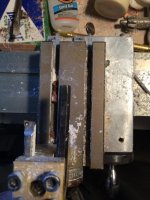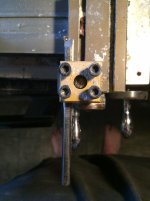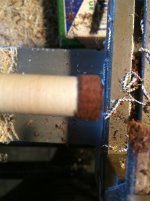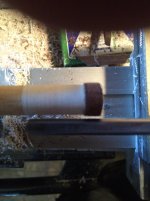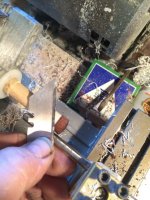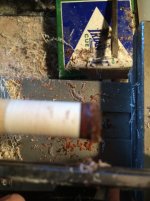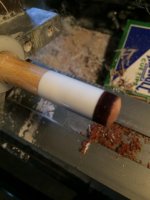Working as a machinist I have a good understanding of how a lathe works, however I do not have the money to spend to just buy a cue lathe.
So I did some research and I jury rigged one that would suffice for simple things like shaft cleaning, tip replacements etc.
I've watched enough videos and read enough how to instruction guides on tip replacement that the entire process if fairly straight forward.
I got my "lathe" assembled and everything runs properly, there's a little bit of run out in the headstock but it's manageable considering I'm not trying to hold .0001" tolerances.
My problem however comes once the new tip is glued on and I'm trying to shave it down to size with the ferrule. I've seen many cue makers use a simple razor knife to do this, so I figured it can't be that hard to free hand it... Boy was I wrong.
I mangled the first blade I used and after about a half hour managed to trim the tip down some, it's playable but it's not very pretty to look at.
I do have a tool rest to use and it didn't seem to help any. The knife wants to jump around and doesn't seem to like the leather very much. But watching so many people do it so effortlessly makes me believe I'm doing something wrong.
Any advice or pointers would be much appreciated.
So I did some research and I jury rigged one that would suffice for simple things like shaft cleaning, tip replacements etc.
I've watched enough videos and read enough how to instruction guides on tip replacement that the entire process if fairly straight forward.
I got my "lathe" assembled and everything runs properly, there's a little bit of run out in the headstock but it's manageable considering I'm not trying to hold .0001" tolerances.
My problem however comes once the new tip is glued on and I'm trying to shave it down to size with the ferrule. I've seen many cue makers use a simple razor knife to do this, so I figured it can't be that hard to free hand it... Boy was I wrong.
I mangled the first blade I used and after about a half hour managed to trim the tip down some, it's playable but it's not very pretty to look at.
I do have a tool rest to use and it didn't seem to help any. The knife wants to jump around and doesn't seem to like the leather very much. But watching so many people do it so effortlessly makes me believe I'm doing something wrong.
Any advice or pointers would be much appreciated.
